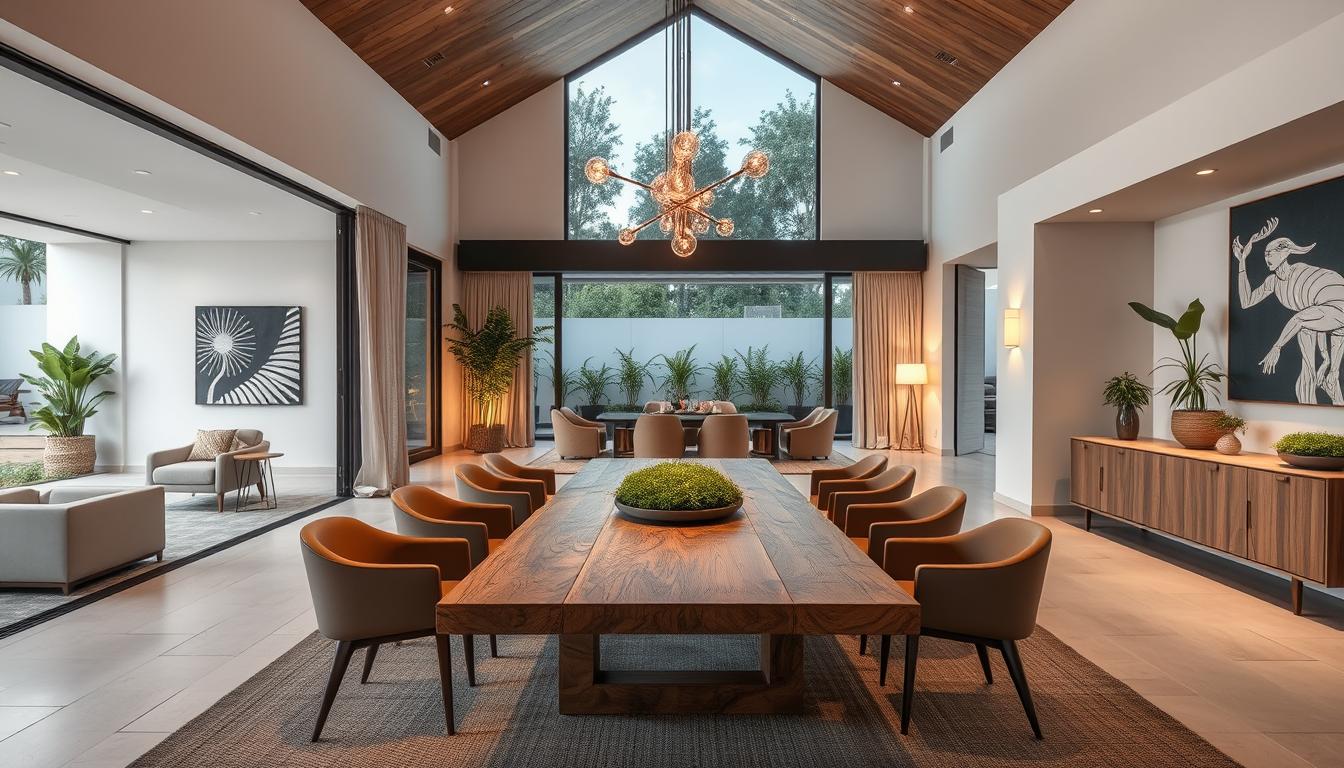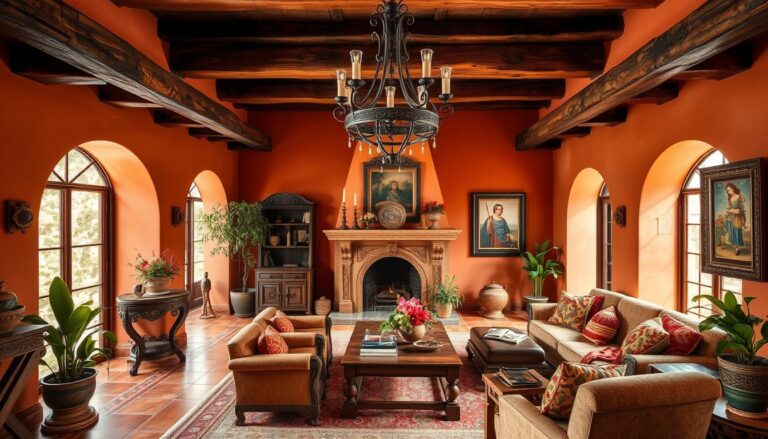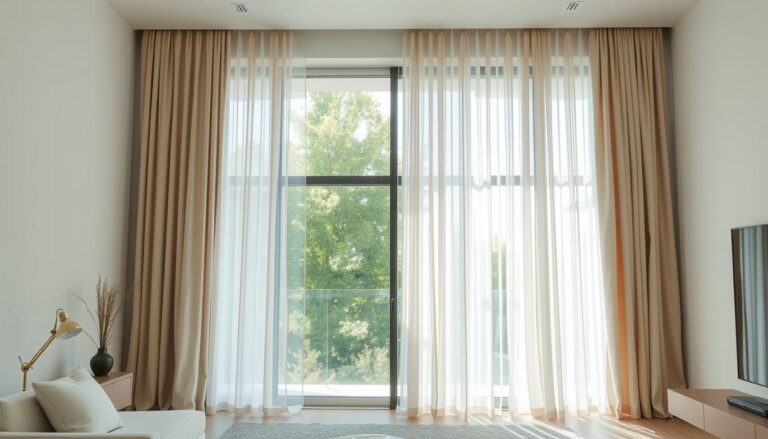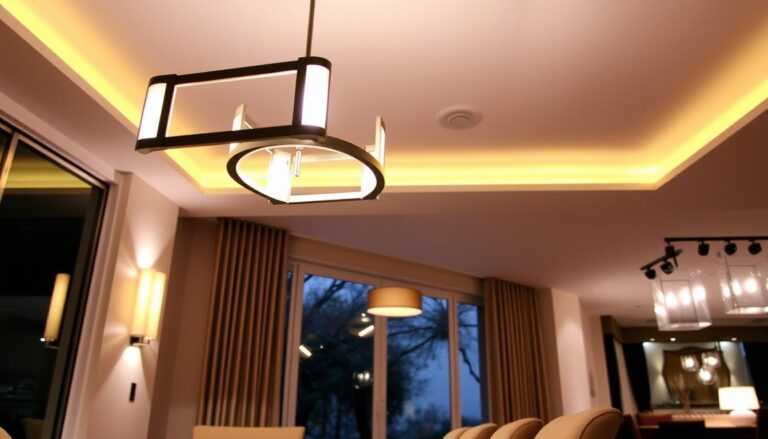Dining Rooms Disappearing: Is Formal Dining a Thing of the Past?
Do you remember those Sunday family dinners around the classic wooden dining table? Those moments are disappearing quickly. Lifestyle changes are changing how we eat, interact, and design our homes. Dining rooms are quietly disappearing, replaced by more flexible and multifunctional areas.
As families get busier and homes get smaller, the traditional dining room is becoming less necessary. It’s now a nostalgic memory. The idea of gathering around a formal dining table is being reimagined. Open-concept kitchens and casual eating spaces are now the focus in modern home design.
Today’s homes show our dynamic lifestyles, where flexibility and efficiency are key. The trend of dining rooms disappearing is not just about space. It’s about how we live, eat, and connect in the 21st century.
Key Takeaways
- Traditional dining rooms are becoming less common in modern homes
- Lifestyle changes drive the shift towards more flexible living spaces
- Open-concept designs are replacing formal dining areas
- Families prioritize multifunctional spaces over dedicated dining rooms
- Contemporary home design emphasizes adaptability and efficiency
The Evolution of Modern Home Design
Home design has changed a lot in recent years. It shows how lifestyles and family structures have evolved. Now, homes have more open, flexible spaces that focus on function and connection.

Open concept living has changed how we use our homes. Today’s compact homes use every inch wisely. They remove walls that once divided kitchens, dining, and living rooms.
From Traditional to Contemporary Layouts
- Rigid room divisions are becoming obsolete
- Multifunctional spaces are now preferred
- Flexibility takes precedence over formal segregation
Impact of Open-Concept Living
Open concept living makes small homes feel bigger. It lets families move around more easily. This design removes walls, making rooms feel larger and welcoming.
| Traditional Layout | Open Concept Design |
|---|---|
| Closed, separate rooms | Interconnected living spaces |
| Limited social interaction | Enhanced family communication |
| Reduced natural light | Improved light flow |
Changing Family Dynamics
Today’s families want homes that fit their busy lives. Compact homes with open layouts are perfect. They allow easy movement between cooking, eating, and hanging out, showing how modern families live and connect.
Why Dining Rooms Are Becoming Obsolete
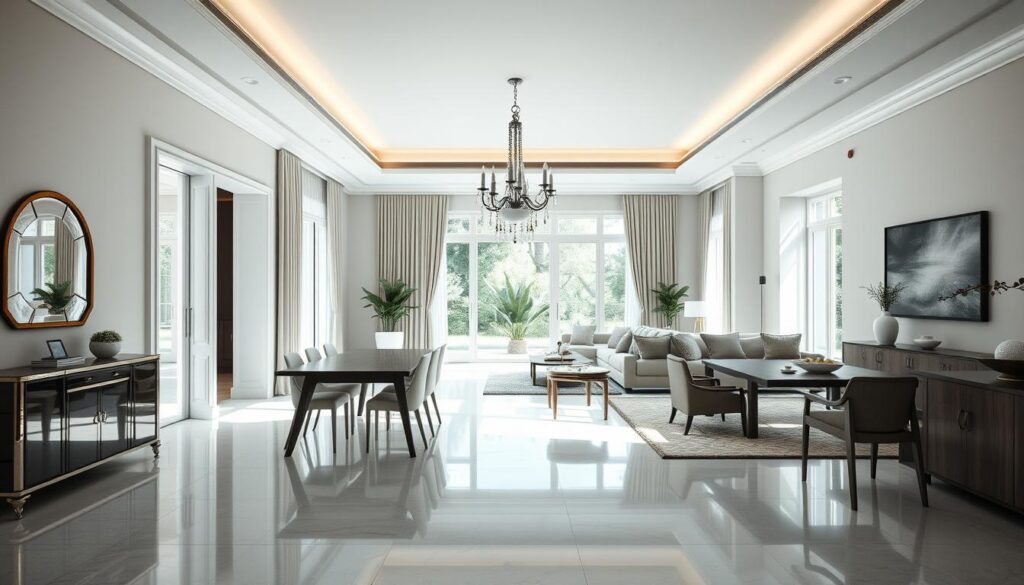
The traditional dining room is quickly disappearing from modern homes. Downsizing trends and changing lifestyles are leading this change. Families now want spaces that are flexible and can meet their needs.
Several key factors contribute to dining rooms disappearing from contemporary homes:
- Rise of casual eating habits
- Smaller living spaces in urban environments
- Increased preference for open-concept layouts
- Technology-driven meal experiences
Your home’s layout shows how social dynamics are changing. Younger people prefer casual dining over formal meals. Kitchen islands and small dining areas are now more popular than big dining rooms.
| Dining Space Trend | Percentage of Homes |
|---|---|
| Traditional Dining Rooms | 35% |
| Open Concept Dining Areas | 52% |
| Kitchen Island Dining | 13% |
Economic reasons also play a big part in downsizing trends. Smaller homes cost less to maintain and fit with minimalist designs. By removing formal dining rooms, homeowners can use the space for more practical things.
This change shows a bigger shift towards living spaces that are efficient and adaptable. It’s about focusing on function over traditional room divisions.
The Rise of Multipurpose Spaces
Modern homes are changing how we live. People want rooms that can do many things. These rooms are flexible and practical, unlike old designs.
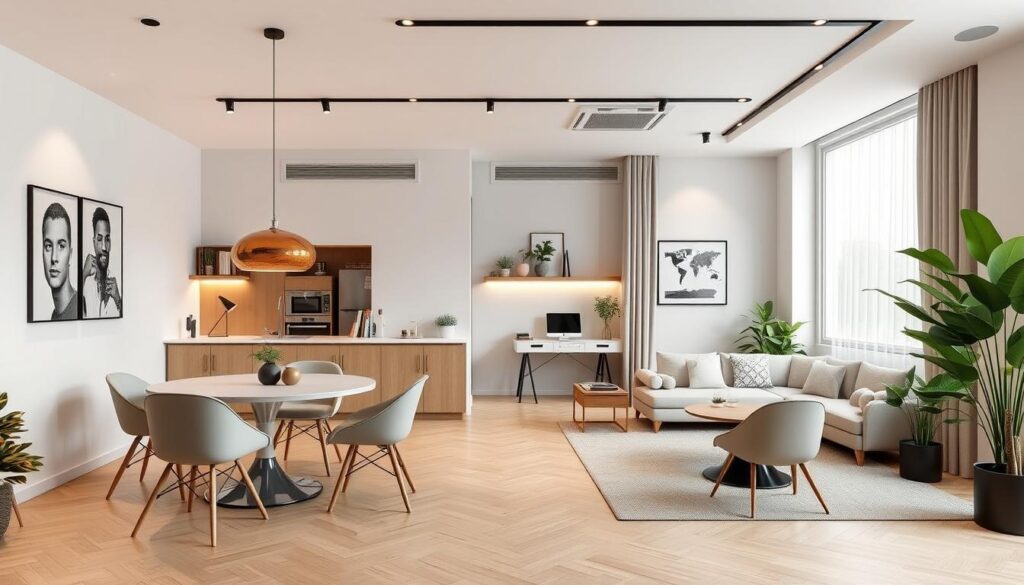
Designing rooms that do many things is now big in home design. Your living space can be many things without losing style or comfort.
Kitchen Islands as Dining Alternatives
Kitchen islands have changed how we eat at home. They offer:
- Casual dining spaces
- Social gathering points
- Additional food preparation areas
- Integrated storage solutions
Flexible Furniture Solutions
New furniture makes it easy to have flexible spaces. Pieces like extendable tables and fold-down desks help you use your space well.
| Furniture Type | Functionality | Space Saved |
|---|---|---|
| Expandable Dining Table | Adjusts from 4 to 10 seats | 50% floor space |
| Murphy Bed/Table Combo | Bedroom to Home Office | 70% room flexibility |
| Nesting Coffee Tables | Compact Storage | 40% space reduction |
Smart Storage Integration
Good storage is key in multipurpose rooms. Built-in cabinets and hidden spots keep things tidy. This way, your space stays clean and organized.
Dining Rooms Disappearing: Statistical Trends
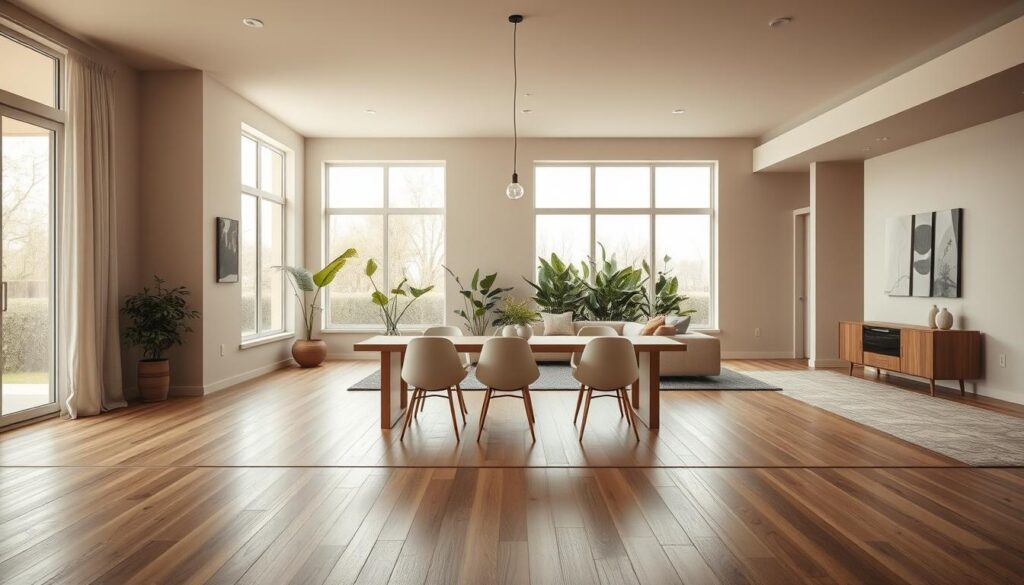
The way we design homes is changing fast. Dining rooms are becoming less common. Studies show a big shift towards minimalist living.
Real estate data shows fewer homes have dedicated dining rooms. Architects and designers see a big change. More people want spaces that can be used in many ways.
- 75% of new home constructions in urban areas skip traditional dining rooms
- Millennials drive the trend toward dining rooms disappearing
- Open-concept layouts now dominate residential design
Research from the National Association of Home Builders shows a big change in homes:
| Year | Homes with Dedicated Dining Rooms | Percentage Decrease |
|---|---|---|
| 2010 | 62% | – |
| 2015 | 48% | 22.6% |
| 2022 | 35% | 42.8% |
Your home’s design shows how our lifestyles are changing. The rise of minimalist living has made dining rooms less popular. Families now prefer spaces that can be used in many ways.
Space-Saving Alternatives for Modern Homes
Modern homeowners are changing how they think about dining spaces. They’re using space-saving designs that are both functional and stylish. The old-fashioned dining room is fading away. People want furniture that can change with their busy lives.
Convertible Dining Solutions
Your dining area can now change with the latest furniture. Wall-mounted tables and expandable consoles offer flexible dining options. They save space and let you create a dining area when you need it.
- Wall-mounted drop-leaf tables
- Expandable console tables
- Fold-down dining surfaces
Built-in Banquettes and Nooks
Built-in seating is a smart way to save space. Corner banquettes and window nooks make cozy dining areas. They fit well with your home’s design, offering both comfort and storage.
Minimalist Dining Options
Choose sleek, compact dining furniture for modern homes. Bar-height tables, small bistro sets, and modular designs are great for small spaces. They add style to your home without taking up too much room.
- Bar-height tables
- Compact bistro sets
- Modular dining configurations
The Social Impact of Vanishing Dining Rooms
Lifestyle changes are changing how families interact at home. Open concept living has made social spaces more open. The dining room’s disappearance shows how family dynamics and communication are evolving.
Modern families are seeing big changes in how they interact at home. Casual dining and shared spaces have become the norm. This shift makes family connections more natural and flexible.
- Increased daily interactions between family members
- More flexible meal and conversation spaces
- Enhanced visual connectivity within home environments
Technology and work patterns have also changed family time. Kitchen islands and multifunctional areas have become key gathering spots. They’ve taken over the role of the traditional dining room.
Open concept living brings many benefits but also challenges old ways of communicating. Families must make an effort to connect meaningfully in these new spaces.
- Pros of open concept spaces:
- Better communication
- Improved natural light
- More versatile living areas
- Cons of open concept spaces:
- Reduced privacy
- More noise transmission
- Less defined functional zones

